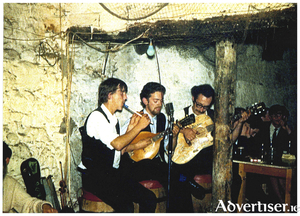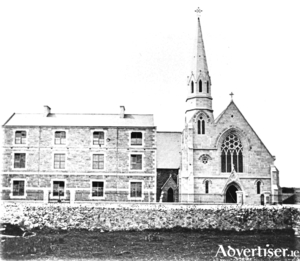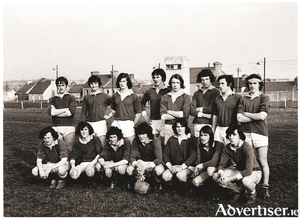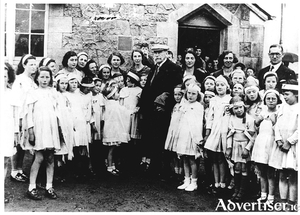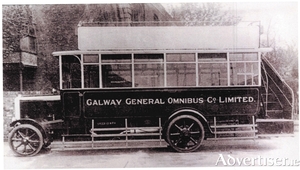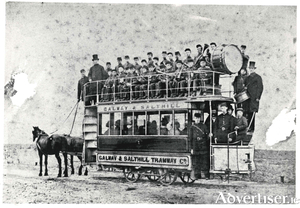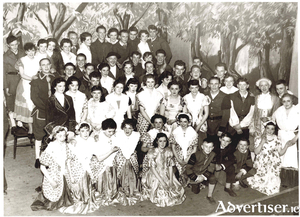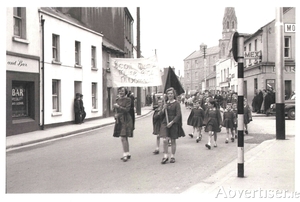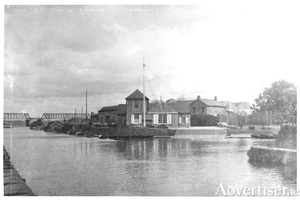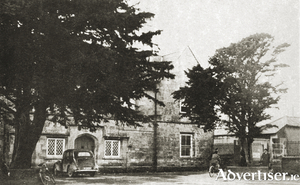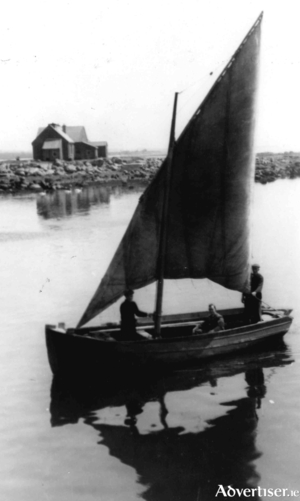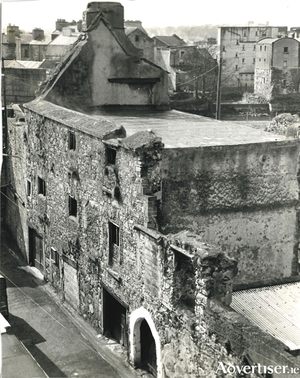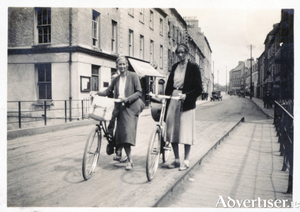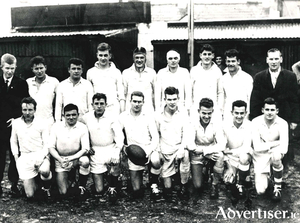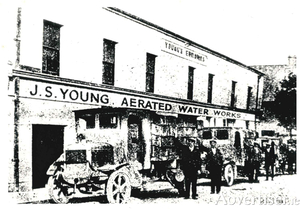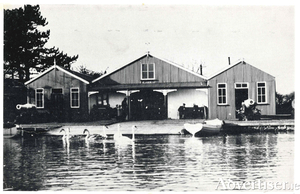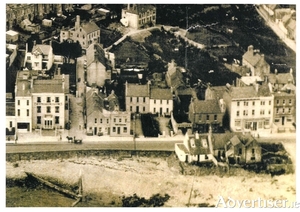Tomás Bán and Helena Concannon
Thu, May 25, 2023
Tomás Bán and his wife Helena made an outstanding contribution to the cultural enrichment of Galway, and indeed of the country generally, in the first half of the last century.
Read more ...Of postmen and postwomen
Thu, May 18, 2023
The regular use of the words ‘litir’ and ‘post’ in 15th century Irish manuscripts suggests that by that time a postal system was already in existence in Ireland. The English postal system was completely reformed by a man named Witherings in 1638 and he was then invited to do the same in Ireland. By the 1650s, mail was being carried by post boys who walked 16 to 18 miles a day between towns. It is believed the Galway Post Office was set up in 1653 when the Cromwellians were still here. In those early years, the local postmaster was expected to provide the premises, so every time a new postmaster was appointed, it meant a new main Post Office.
Read more ...'It was in the air'
Thu, May 11, 2023
Prior to 1961, public performance of Irish traditional music in Galway took place primarily in the form of céilís in large dancehalls — namely in the Hangar, the Commercial and the Astaire. These were enormously popular — remember the hundreds of bicycles parked outside the Hangar on a Sunday night — but they began to go out of fashion in the sixties and were regarded as old fashioned and backward.
Read more ...The Jesuits in Galway
Thu, May 04, 2023
There is historical evidence to show that the Jesuits were already in the city in the early 1600s, combining the work of ministry and education. In 1645, the Order set up their first college in Galway on Lower Abbeygate Street, where Powell’s shop is today. They were forced to leave the city by the Cromwellians, but they came back. They were forced to leave the city by the Williamites, but they came back. They had to close their Galway residence in 1768 due to a lack of manpower but they were persistent and came back again, and in 1859 they took over a house on Prospect Hill and the following year, set up a college in Eyre Square.
Read more ...Maelíosa, a man of many parts
Thu, Apr 27, 2023
Maelíosa Stafford did not really have a chance, he was destined for a life in theatre, drama was in his blood, acting in his DNA. His first time on stage was in a Taibhdhearc production his mother was acting in … he was still in his mother’s womb. Both of his parents, Seán and Máire, had made an enormous contribution to the arts scene in Galway and especially to theatre in the west, in various guises as actors, directors, translators of plays into Irish, writers of pantomimes, costume designers, librettists, and drama teachers.
Read more ...Scoil Fhursa, nócha bliain ag fás
Thu, Apr 20, 2023
The Irish Church Missions was the missionary wing of the Church of Ireland and England. They were a very rich organisation who felt it was imperative to convert Roman Catholics “from the errors of Popery”. Around the year 1850, they had two houses in Merchants Road and established a school in one of them (known as The Dover School) where a child might get an evening meal and a night’s lodging after attending a Bible class.
Read more ...Aidan Heffernan, a sporting champion
Thu, Apr 13, 2023
Aidan was one of 13 children born to John and Lena Heffernan who lived in 143 Bohermore. John was originally from Lower Salthill and worked in the ESB. Aiden went to school in St Patrick’s and later to Moneenageesha.
Read more ...From trams to buses
Thu, Apr 06, 2023
When the Galway-Salthill Tramway ceased trading in 1918, it caused a problem for locals who had been using the service as public transport so a group of local businessmen came together on April 5, 1919 to register The Galway General Omnibus Company Limited as a public company. The directors were Thomas McDonough, Joe Young, Robert Mackie, Michael Crowley, Philip O’Gorman, Martin Hynes and Martin Finan. John Leech was the secretary and Joseph Garvey the manager.
Read more ...The Galway/ Salthill Tramway
Thu, Mar 30, 2023
The Galway and Salthill Tramway Company was inaugurated in 1877. The Town Commissioners gave the project every encouragement and extended the time limit in which the tracks had to be laid. The single tramline was two and a quarter miles long with eight passing loops, roughly 250 yards apart. The rails were heavy steel, the gauge was three feet wide and the trams were horse-drawn, there was no electricity in Galway for another 12 years or so. The cost of construction was £13,000. The depot was in Forster Street and the western terminus was opposite the Eglinton Hotel.
Read more ...The Patrician Musical Society
Thu, Mar 23, 2023
The first musical production by a Galway Musical Society in the 20th century was ‘The Messiah’ performed by the Galway Orchestral Society in 1902 and we know, they also performed in the Court Theatre in 1903. In 1907, the Technical Choral Society was formed under the baton of Clement Leaper, headmaster of the Technical School. In 1924, Miss Mai Fogarty produced ‘The Bohemian Girl’ and later ‘The Pirates of Penzance’ but after that there was no notable musical society until the 1950’s.
Read more ...St Patrick’s Day parades of yesteryear
Thu, Mar 16, 2023
St Patrick may never have made it to Galway, I could not find any legend that associates him with the city, except maybe for anyone who went to Athenry to get their arse painted green. The anniversary of the saint’s death has been celebrated for many generations and the central focus of the day was usually the parade.
Read more ...The Royal Galway Yacht Club
Thu, Mar 09, 2023
Our first illustration today is a drawing by MJ Tighe, architect, Galway, of the proposed new clubhouse for the Royal Galway Yacht Club at the corner of the Gaol River and the Eglinton Canal. The club was founded and received Royal Warrant in 1882. It was established as a social combination to promote sailing and rowing on the bay and lake, and the enjoyment of all the amenities of the Corrib Lake and River. They managed to survive and carry on for some years in difficult circumstances.
Read more ...The Galway Workhouse
Thu, Mar 02, 2023
The first formal meeting of the Board of Guardians of the Galway Workhouse took place in the Town Hall on July 3, 1839, and the building opened on March 2, 1842, one of many such workhouses built around the country. On March 16, the first pauper died from old age and destitution. The numbers of inmates gradually increased to 313 by May 1845, after which the Famine made a huge impact on the project. It was originally designed for 800 destitute persons but this quickly increased to 1,000. Included in the complex was an infirmary for sick paupers but this rapidly became the hospital for the city’s poor.
Read more ...The Galway Isolation Hospital
Thu, Feb 23, 2023
The possible introduction of cholera and smallpox from abroad concerned the Government, and so the Cholera Act of 1893 empowered sanitary authorities to enter lands for the construction of isolation hospitals.
Read more ...Kirwan’s Lane, a bird’s eye view
Thu, Feb 16, 2023
This lane is one of the most attractive in Galway and one of the most historic. There were originally 14 lanes in medieval Galway and this is one of the few that still exist. It dates back to the 16th century. As our photograph shows, it must have been very impressive back then.
Read more ...George Chambers’ photographic archive
Thu, Feb 09, 2023
George Chambers was born in England in 1873. He lived at Temple Fortune Lane in Middlesex. He travelled extensively and this included several trips to Ireland. In 1929, he toured parts of West Cork and Wicklow; in 1931, he visited Galway city and the Aran Islands and on subsequent trips he went to the Blasket Islands, to Achill and Clare Islands, and to various other islands off the coast of Donegal.
Read more ...Remembering ‘Williameen’ McDonagh
Thu, Feb 02, 2023
We have two photographs today of groups from Our Lady's Boys' Club. Firstly, a club rugby team that made history by winning the Connacht Junior League for the first time in 1959, and secondly, some club members taken on the annual camp in Lough Cutra Castle, c1956.
Read more ...Joe Young’s aerated waters
Thu, Jan 26, 2023
Joseph Young was appointed manager of Messrs Thomas Tracey’s Mineral Water Works and Licensed Premises in Mary Street after the death of Thomas Tracey. He later married the niece of Mrs Tracey, Miss Edith O’Connor of Clifden, and Mrs Tracey signed over the works to Joe Young on the marriage.
Read more ...The Corrib Rowing and Yachting Club
Thu, Jan 19, 2023
This club, originally established in 1864, must be one of the oldest in Galway, if not one of the oldest amateur sporting clubs in the country. Unfortunately, the minutes of the club meetings for 1864 and 1865 cannot be found, but we are fortunate that Maurice Semple had access to the minutes for most other years and published them in a book entitled A Century of Minutes, the Story of the Corrib Club, 1864 – 1966.
Read more ...Upper Salthill, a bird’s eye view, c1945
Thu, Jan 12, 2023
This aerial photograph was taken c1945. On the left you can see the Eglinton Hotel which was originally built in the 1860s. Up to that time, Salthill was a small village that included Lenaboy Avenue and the area between what we know as Seapoint and the Bal. The construction of the Eglinton was on a scale not seen before in Salthill, and it extended the village to the west. It came at a time when locals were beginning to promote the village as a resort, a destination for tourists.
Read more ...

